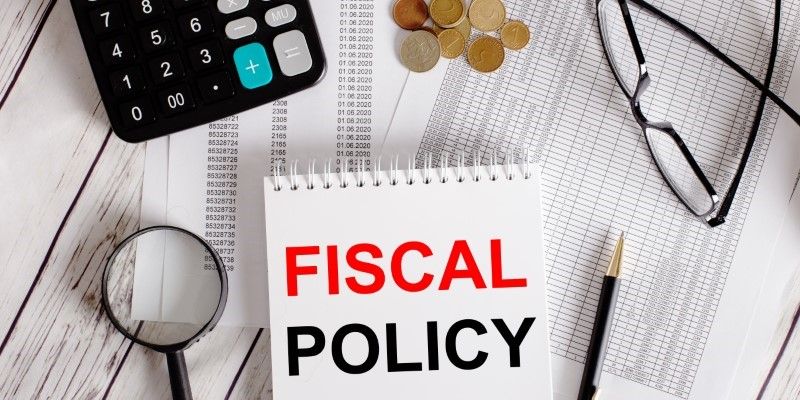How Government Policies Are Changing The Financial Landscape
Government policies play a critical role in shaping the financial landscape. As economies evolve, policies adapt to meet new challenges and opportunities. These policies influence various aspects, from market regulations to monetary strategies and fiscal measures. In recent years, factors like technology, globalization, and societal changes have prompted significant shifts in how governments approach finance. This article delves into how regulatory reforms, monetary policies, fiscal measures, and sustainability initiatives transform the financial sector.
Regulatory Reforms And Market Stability
Regulatory reforms are essential for maintaining market stability and ensuring financial institutions operate transparently and responsibly. In the wake of the global economic crisis in 2008, many governments recognized the need for stricter regulations to prevent excessive risk-taking.

Strengthening Oversight
One central area of reform has been the strengthening of oversight mechanisms. Regulatory bodies like the Securities and Exchange Commission (SEC) in the United States and similar entities worldwide have enhanced their capabilities to monitor financial institutions. These organizations now employ advanced technology and analytics to track market activities more effectively, identifying potential risks before they escalate.
Consumer Protection Initiatives
In addition to oversight, there has been a significant focus on consumer protection. Policies aimed at safeguarding consumers from predatory lending practices, misleading financial products, and data breaches have gained traction. Governments are implementing measures to ensure transparency in financial products, requiring institutions to disclose clear information about fees, risks, and terms. This empowerment of consumers fosters a more equitable financial environment.
Addressing Systemic Risks
Moreover, regulatory reforms are increasingly addressing systemic risks within the financial system. Governments are working to monitor and mitigate risks associated with large financial institutions deemed "too big to fail." Enhanced capital requirements and stress testing are now standard practices, helping to ensure that these institutions can withstand economic shocks without necessitating taxpayer-funded bailouts.
Monetary Policies And Interest Rates
Monetary policy is another crucial tool governments use to influence economic conditions. Central banks, such as the Federal Reserve in the United States, play a vital role in managing inflation, employment levels, and overall economic growth.
Low-Interest Rate Environment
Many central banks have adopted a low-interest-rate environment in response to economic downturns. This approach aims to stimulate borrowing and investment by making credit more affordable. The rationale is that lower interest rates encourage businesses and consumers to spend, thereby boosting economic activity. However, this strategy poses challenges, including potential asset bubbles and increased debt levels.
Quantitative Easing
To further support the economy, central banks have employed quantitative easing (QE) as a tool. QE involves the large-scale purchase of financial assets, such as government bonds, to inject liquidity into the economy. This policy aims to lower long-term interest rates and promote lending. While QE can be effective in the short term, it raises concerns about long-term inflation and the sustainability of such measures.
Inflation Targeting
As economies recover, central banks are now shifting focus toward inflation targeting. Maintaining price stability is crucial for fostering economic confidence. Governments are communicating clear inflation targets to guide expectations and influence financial behaviour. By balancing the need for growth with inflation control, central banks aim to create a stable environment conducive to investment.

Fiscal Policies And Taxation
Fiscal policy refers to using government spending and taxation to influence economic conditions. Governments increasingly leverage budgetary measures to address economic disparities, promote growth, and respond to global challenges.
Stimulus Packages
In times of economic distress, governments often implement stimulus packages to inject funds into the economy. These packages can include direct payments to citizens, infrastructure projects, and business support. Governments aim to stimulate demand and encourage economic recovery by increasing public spending. Recent examples during the COVID-19 pandemic highlighted the importance of swift fiscal responses to mitigate economic fallout.
Progressive Taxation
Another significant trend is the movement toward progressive taxation. Governments are reevaluating tax structures to ensure wealthier individuals and corporations contribute a fair share. This shift aims to reduce income inequality and generate additional revenue for social programs. Discussions around wealth taxes and corporate tax reforms have gained momentum, reflecting a growing recognition of the need for equitable taxation.
Investment In Public Services
Moreover, fiscal policies are increasingly focused on investing in public services such as education, healthcare, and infrastructure. Governments aim to enhance human capital and promote long-term economic growth by prioritizing these areas. Investments in green technologies and sustainable infrastructure are also becoming pivotal as societies seek to address climate change.

Sustainability, Innovation, And The Future Of Finance
As the world faces pressing challenges like climate change and social inequality, sustainability and innovation are emerging as central themes in the financial landscape. Governments are recognizing the importance of aligning financial systems with broader societal goals.
Green Finance Initiatives
One of the most significant developments is the rise of green finance initiatives. Governments promote investments in sustainable projects, and companies are committed to environmental responsibility. This includes green bonds, which raise funds for eco-friendly projects, and incentives for businesses to adopt sustainable practices. By channelling investments into renewable energy and other sustainable sectors, governments aim to transition toward a greener economy.

Fintech And Digital Innovation
Innovation in financial technology (fintech) is also reshaping the economic landscape. Governments are adapting regulations to encourage the growth of fintech companies while ensuring consumer protection and stability. Digital currencies and blockchain technology are becoming potential game-changers for traditional banking systems. Central banks are exploring issuing digital currencies, enhancing payment systems and improving financial inclusion.
Social Responsibility And Impact Investing
Furthermore, there is a growing emphasis on social responsibility and impact investing. Investors are increasingly interested in supporting companies that prioritize social and environmental considerations alongside financial returns. Governments are fostering this trend by creating frameworks encouraging responsible investing and accountability. Governments aim to create a more sustainable and equitable financial landscape by aligning investment strategies with societal goals.

Conclusion
Government policies are significantly transforming the financial landscape. Regulatory reforms enhance market stability and consumer protection, while monetary policies adapt to economic challenges. Fiscal measures address disparities and promote growth, and sustainability initiatives are shaping the future of finance. The financial landscape will likely change further as governments respond to evolving economic, social, and environmental factors. Embracing innovation and sustainability will be crucial in building a resilient and equitable monetary system for the future.










